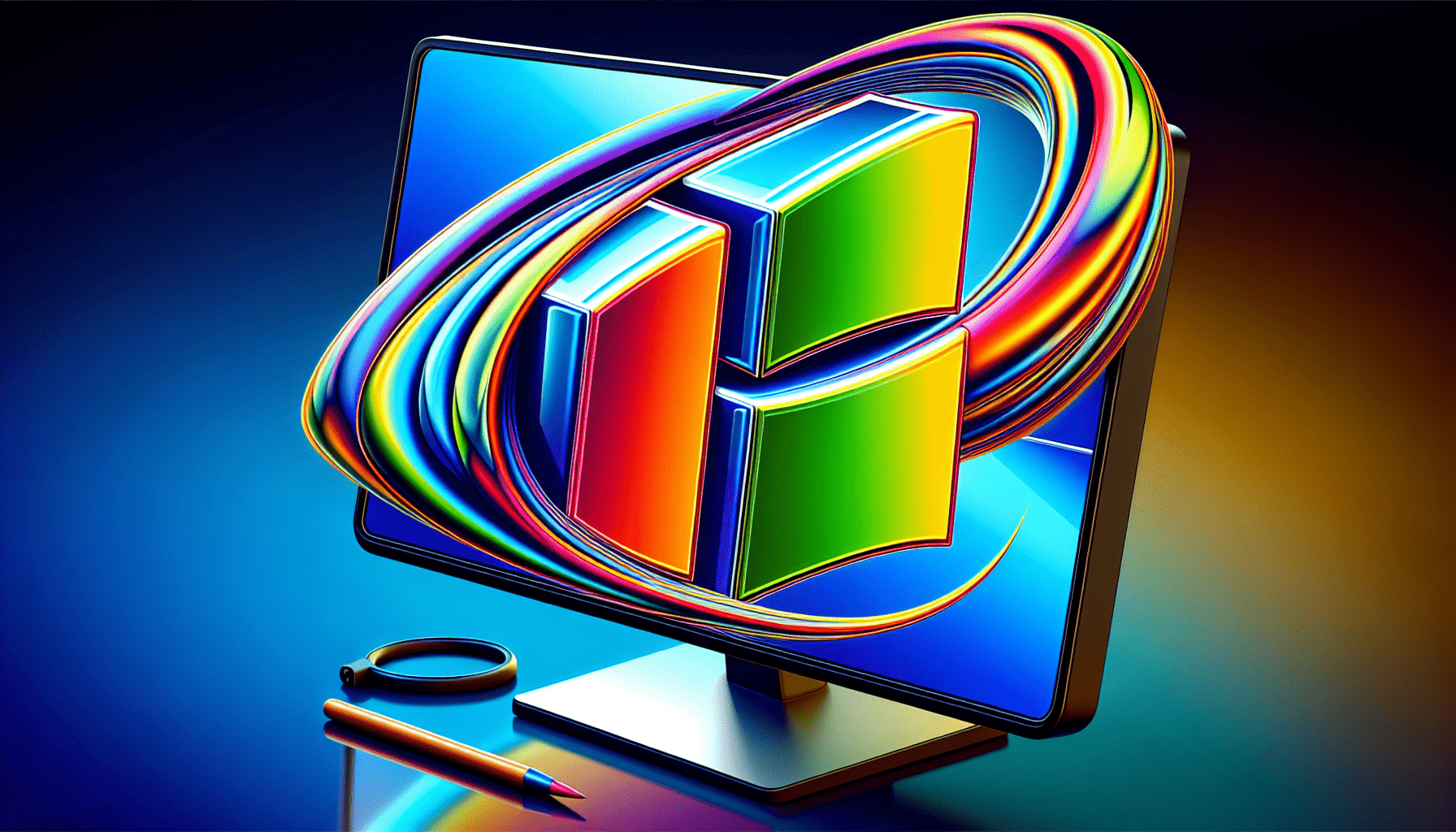







So, you’ve heard a lot about Linux and its power-packed capabilities, but you’re wondering if it can work its magic on any laptop you own or plan to buy. Well, the good news is that Linux, renowned for its versatility and flexibility, can indeed run on a wide array of laptops. From the high-end models to the more budget-friendly ones, Linux can seamlessly adapt to your tech setup and provide you with an alternative to the traditional operating systems. Whether you’re a seasoned Linux user or just starting to explore its potential, let’s delve into the world of Linux and discover how you can make it work on any laptop.
System Requirements
Check the minimum system requirements
Before installing Linux on your laptop, it’s important to ensure that your laptop meets the minimum system requirements. Different Linux distributions may have different requirements, so it’s essential to check the specifications for the particular distribution you plan to install. Generally, Linux requires a minimum of 1GB RAM, 10GB of available hard drive space, and a 1GHz processor. However, more resource-intensive distributions may have higher requirements.
Consider hardware compatibility
In addition to the minimum system requirements, it’s crucial to consider the compatibility of your laptop’s hardware with the Linux distribution you choose. Some laptops may have unique hardware components that require additional drivers or may not be well-supported by certain distributions. Researching the compatibility of your laptop’s hardware with Linux can help you avoid any compatibility issues down the line. Online forums and communities dedicated to Linux can be excellent resources for finding information about hardware compatibility.
Choosing a Linux Distribution
Research different Linux distributions
Linux offers a wide variety of distributions to choose from, each with its own set of features, user interface, and overall experience. Before deciding on a distribution, take the time to research and understand the various options available. Some popular distributions include Ubuntu, Fedora, Linux Mint, and Debian. Each distribution has its own strengths and weaknesses, so it’s important to consider your needs and preferences before making a decision.
Consider the laptop’s specifications
The specifications of your laptop can also influence the choice of Linux distribution. If you have a lower-end laptop with limited resources, a lightweight distribution that requires fewer system resources may be more suitable. On the other hand, if you have a high-performance laptop, you may want to opt for a more feature-rich distribution that can take full advantage of your hardware. Considering the compatibility of the distribution with your laptop’s specifications can help ensure a smooth and efficient experience.
Choose a distribution suitable for your needs
After researching different Linux distributions and considering your laptop’s specifications, it’s time to choose the distribution that best aligns with your needs. If you are new to Linux, distributions like Ubuntu or Linux Mint are known for their user-friendliness and vast community support. If you are more experienced or have specific requirements, distributions like Fedora or Arch Linux may be more suitable. Remember, the beauty of Linux is the freedom to choose, so don’t hesitate to try out different distributions until you find the perfect fit for you.

Installation Methods
Dual-booting with Windows
If you intend to keep your existing Windows operating system alongside Linux, dual-booting is the way to go. Dual-booting allows you to choose between Windows and Linux when starting up your laptop, giving you the flexibility to use both operating systems. To set up a dual-boot configuration, you’ll need to allocate a separate partition on your hard drive for the Linux installation. This can typically be done during the installation process, and most Linux distributions provide easy-to-follow instructions for setting up dual-boot.
Installing Linux as the sole operating system
If you’re ready to fully embrace Linux and no longer require Windows, you can install Linux as the sole operating system on your laptop. This installation method allows for a more streamlined experience and eliminates the need for managing multiple operating systems. During the installation process, you can choose to wipe your hard drive and install Linux in its entirety. However, before proceeding with this method, it’s vital to back up any important data to ensure you don’t lose any valuable information.
Preparing for Installation
Backing up important data
Before you proceed with the installation of Linux, it’s crucial to back up any important data on your laptop. While the installation process itself is generally safe, there is always a small risk of data loss. By backing up your important files, documents, and media to an external storage device or cloud storage service, you can have peace of mind knowing that your data is safe.
Creating a bootable USB drive
To install Linux on your laptop, you will need a bootable USB drive containing the Linux distribution of your choice. Creating a bootable USB drive is a straightforward process and can be done using various tools available for both Windows and Linux. These tools allow you to transfer the Linux distribution’s ISO file onto the USB drive, making it bootable and ready for installation. Once the USB drive is prepared, you can plug it into your laptop and proceed with the installation process.
Disabling Secure Boot
Depending on your laptop’s settings, you may need to disable Secure Boot before installing Linux. Secure Boot is a feature that ensures only trusted software is loaded during the boot process, which can sometimes interfere with the installation of Linux. Disabling Secure Boot is usually done through the BIOS or UEFI settings of your laptop. It’s important to note that the steps to disable Secure Boot may vary depending on the laptop’s manufacturer and model. Consulting your laptop’s user manual or contacting the manufacturer’s support can provide guidance on disabling Secure Boot.

Installing Linux
Following the installation process
Once you have prepared your laptop by backing up data, creating a bootable USB drive, and disabling Secure Boot (if necessary), it’s time to proceed with the installation of Linux. The installation process varies slightly depending on the distribution you choose, but generally, it involves booting from the USB drive, selecting the installation options, and configuring the partitioning for the Linux installation. It’s essential to carefully follow the on-screen instructions provided by the distribution to ensure a successful installation.
Partitioning the hard drive
During the Linux installation process, you will encounter the option to partition your hard drive. Partitioning allows you to allocate space on your hard drive for different purposes, such as the root partition, home partition, and potentially a swap partition. The partitioning scheme you choose depends on your needs and preferences. Many Linux distributions offer an automatic partitioning option that can simplify the process for beginners. However, more advanced users may prefer manually partitioning to have more control over the allocation of disk space.
Setting up the Linux username and password
Finally, during the installation process, you will be prompted to set up a username and password for your Linux installation. The username will be used to log in to your Linux environment, while the password will provide security and protect your personal data. It’s important to choose a strong password that combines uppercase and lowercase letters, numbers, and special characters for maximum security. Once you have set up your username and password, you are ready to complete the installation and start using Linux on your laptop.
Driver and Software Compatibility
Checking for driver availability
After installing Linux on your laptop, it’s essential to check for driver availability for your specific hardware components. Most Linux distributions come with a wide range of drivers already included, ensuring that basic functionality works out of the box. However, certain hardware components, such as graphics cards or wifi adapters, may require additional drivers to fully utilize their capabilities. Checking the manufacturer’s website or community forums can provide information on whether Linux drivers are available for your specific hardware components.
Installing necessary drivers
If your laptop requires additional drivers to work correctly with Linux, you can usually install them through the distribution’s package manager or by downloading them from the manufacturer’s website. For popular hardware components, Linux often has open-source drivers available, making installation hassle-free. However, for proprietary hardware, drivers may need to be obtained directly from the manufacturer and manually installed. Following the installation instructions provided by the manufacturer or the Linux community can guide you through the process.
Finding alternative software
While many popular software packages have Linux versions available, some Windows-specific software may not be compatible with Linux. In such cases, it’s essential to find alternative software that fulfills your needs. The Linux community offers a wide range of open-source software alternatives that are often comparable in functionality to their Windows counterparts. Online forums, community websites, and package managers can help you discover alternative software options tailored to your specific requirements.
Troubleshooting
Dealing with common installation issues
During the installation process, you may encounter certain issues that can hinder a smooth installation. These can include errors related to disk partitions, bootloader configuration, or hardware compatibility. Fortunately, most Linux distributions have robust communities that provide support and troubleshooting assistance. Consulting online forums, searching for error messages, or reaching out to the community can help you overcome any obstacles you may encounter during the installation process.
Updating software and drivers
Once you have successfully installed Linux on your laptop, it’s crucial to regularly update your software and drivers to ensure optimal performance and security. Linux distributions offer package managers that make it easy to update all installed software with a single command. The package manager also takes care of updating drivers when new versions become available. By keeping your software and drivers up to date, you can benefit from bug fixes, performance improvements, and the latest security patches.
Seeking support from Linux communities
No matter how experienced you are with Linux, there may come a time when you encounter an issue that requires assistance. Linux communities are known for their helpfulness and are a great resource when seeking support. Online forums, dedicated websites, and chat channels provide platforms for users to ask questions, share knowledge, and seek troubleshooting advice. Engaging with the Linux community can not only solve your current problem but also deepen your understanding of Linux and its ecosystem.
Performance Considerations
Optimizing Linux for better performance
To ensure optimal performance on your laptop, there are several steps you can take to optimize your Linux installation. One of the most effective ways to improve performance is by using a lightweight window manager or desktop environment. These alternatives to resource-intensive environments like GNOME or KDE provide a more efficient user experience, especially on lower-end laptops. Additionally, disabling unnecessary startup services, managing background processes, and keeping your system clean from unnecessary packages can help improve overall performance.
Monitoring system resources
Monitoring system resources is an excellent way to gain insights into how your laptop is performing under Linux. Tools like top, htop, and system-monitor provide real-time information about CPU usage, memory usage, disk activity, and network activity. By monitoring system resources, you can identify any potential bottlenecks or resource-intensive processes that may be affecting the performance of your laptop. Regularly checking resource usage can also help you troubleshoot any abnormal behavior or quickly identify any potential issues.
Security and Updates
Enabling automatic updates
To ensure the security of your Linux installation, it’s essential to enable automatic updates. Most Linux distributions offer the option to automatically download and install the latest security patches and updates. Enabling automatic updates ensures that your laptop remains protected against known vulnerabilities and exploits. However, it’s still recommended to periodically check for and apply updates manually, especially when dealing with critical software components like the kernel or firmware.
Installing antivirus software
While Linux is generally considered more secure than other operating systems, it’s not immune to malware or security threats. Although the risk is relatively low, installing an antivirus software can provide an additional layer of protection. Linux-specific antivirus software, such as ClamAV, is available and can be used to scan for potential threats or viruses. Additionally, practicing safe browsing habits, being cautious with email attachments, and only installing software from trusted sources can help mitigate security risks.
Implementing security best practices
In addition to keeping your system up to date and installing antivirus software, implementing security best practices can further enhance the security of your Linux installation. This includes using strong and unique passwords for all user accounts, enabling a firewall to control incoming and outgoing network traffic, and being mindful of file permissions. Regularly reviewing and adjusting security settings, as well as staying informed about best practices through the Linux community, can help you establish a robust security foundation for your laptop.
Conclusion
Linux can be installed on most laptops with proper research and preparation
With the right research, preparation, and understanding of the installation process, you can successfully install Linux on almost any laptop. By considering the system requirements, hardware compatibility, and your own needs, you can choose a suitable distribution that meets your expectations. Whether you decide to dual-boot with Windows or install Linux as the sole operating system, following the installation process, configuring drivers and software, and optimizing performance will ensure a smooth experience. With its strong community support, security focus, and countless software options, Linux offers a new world of benefits and freedom for your laptop. Embrace the power of Linux and enjoy a versatile and customizable computing experience.






